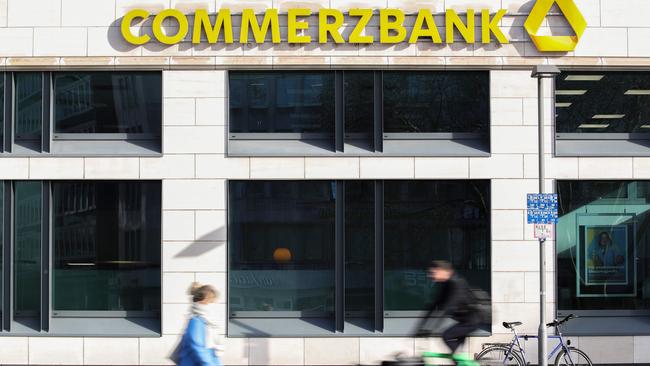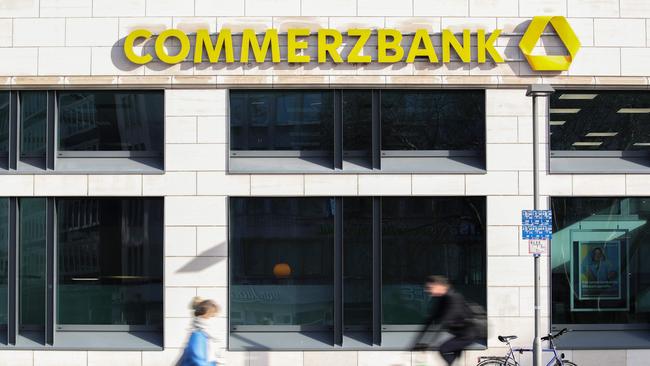‘AI assistant to do anything you can do at a branch today’, inside banking’s big change
Banks have been early adopters of tech – with the first ATMs landing in Australia in the late 1960s – but AI is taking customer interactions to the next level. CBA reveals its plans.

A bank little known outside Germany quietly started a revolution in the financial services industry four weeks ago, quickly capturing the attention of Australia’s top executives.
Commerzbank unleashed a banking “avatar” onto its customers – an advanced bot based on Microsoft’s Azure OpenAI Service – effectively heralding the introduction of digital bankers.
Banks and other companies have used chatbots for years to answer basic questions from customers. These are often clunky and frustrating, with customers just wanting to speak to a human to solve their banking problem.
But Commerzbank says it has created a fully “digitalised person” that interacts with customers in “natural and engaging conversations” to perform various banking services, including personalised advice.
“It is a new way of banking … combining convenience, personalisation, and digital performance on the next level,” said Thomas Schaufler, board member for private and small business Customers at Commerzbank.

Australian banks have been quietly working on similar technology, with Australia’s biggest, Commonwealth Bank, set to launch its first AI-powered assistant “for every customer” in the coming year.
But CBA chief information officer Gavin Munroe said it would be an iterative process, with the first version designed to answer questions and present information rather than perform transactions and open accounts.
“We are in the process of building a CommBank co-pilot banking assistant or banking co-pilot which will be an evolution of first (being) informational then ultimately long term we would like it to be able to do anything you could do today at a branch. But that’s not going to be day one.
“What that (first iteration) will look like will be an interactive model where you can ask basic questions like what is the interest rate on my credit card? What is the best checking account for me, that sort of informational thing. What you won’t get is execution: open me an account or move my money. That will be the second iteration. The first iteration will be informative but also contextual to you.”

It comes as The Australian 2024 CEO Survey revealed that AI is one of the few levers chief executives can pull to dramatically increase productivity as the economy is set to slow next year in the face of higher interest rates.
While AI has sparked concerns that it will replace jobs, most executives who have adopted the technology say those concerns are based on the assumption that output will remain the same. AI’s biggest attraction is to shift employees to more value-added work, making them more productive – like any other technological advancement since the industrial revolution.
Mr Munroe shares this view. “We envision AI helping our assistants, helping our agents and helping our branches. So in that sense, it’ll actually make them better at what they do. So it’ll be easy for them to find information easily for the person in front of them.
“(It’s) freeing up the branches to do the kind of work which we think is actually more important for the customer. That’s the lens we put it on. What is more important for the customer?
“They want to be able to get to the branch person to deal with those complex issues. If the backlog is 30 minutes because they’re dealing with password resets, that’s not effective for them, so this actually should improve them and in my opinion, most of the agents and most of the branch staff want to be engaging with customers on those topics that are relevant. That’s how we think about it.”
Microsoft’s AI Copilot has been integrated into customer contact centres at several big companies, providing real time “coaching” to call centre staff, such as providing them with the steps it took to solve a similar problem in the past as well as quickly draw out relevant information from policy and procedure documents.
Daragh Morrisey, Microsoft’s AI director working with financial service companies, was in Australia earlier this month to help local bank’s fine tune their models – with one bank finding AI helped retain staff rather than replace them.
“The bank didn’t expect it to happen, but they’re reduced contact centre staff churn. One of the banks had 30 per cent leaving every three months – if you think about it, after three months you’re just getting to grips with the bank and things like that,” Mr Morrissey said.
“It’s a very underappreciated role. You are right at the coal face with customers, who ask complicated questions and being able to help them find their answers faster – and having nicer conversations with their customers on a personal level – I think that’s really cool.”




To join the conversation, please log in. Don't have an account? Register
Join the conversation, you are commenting as Logout